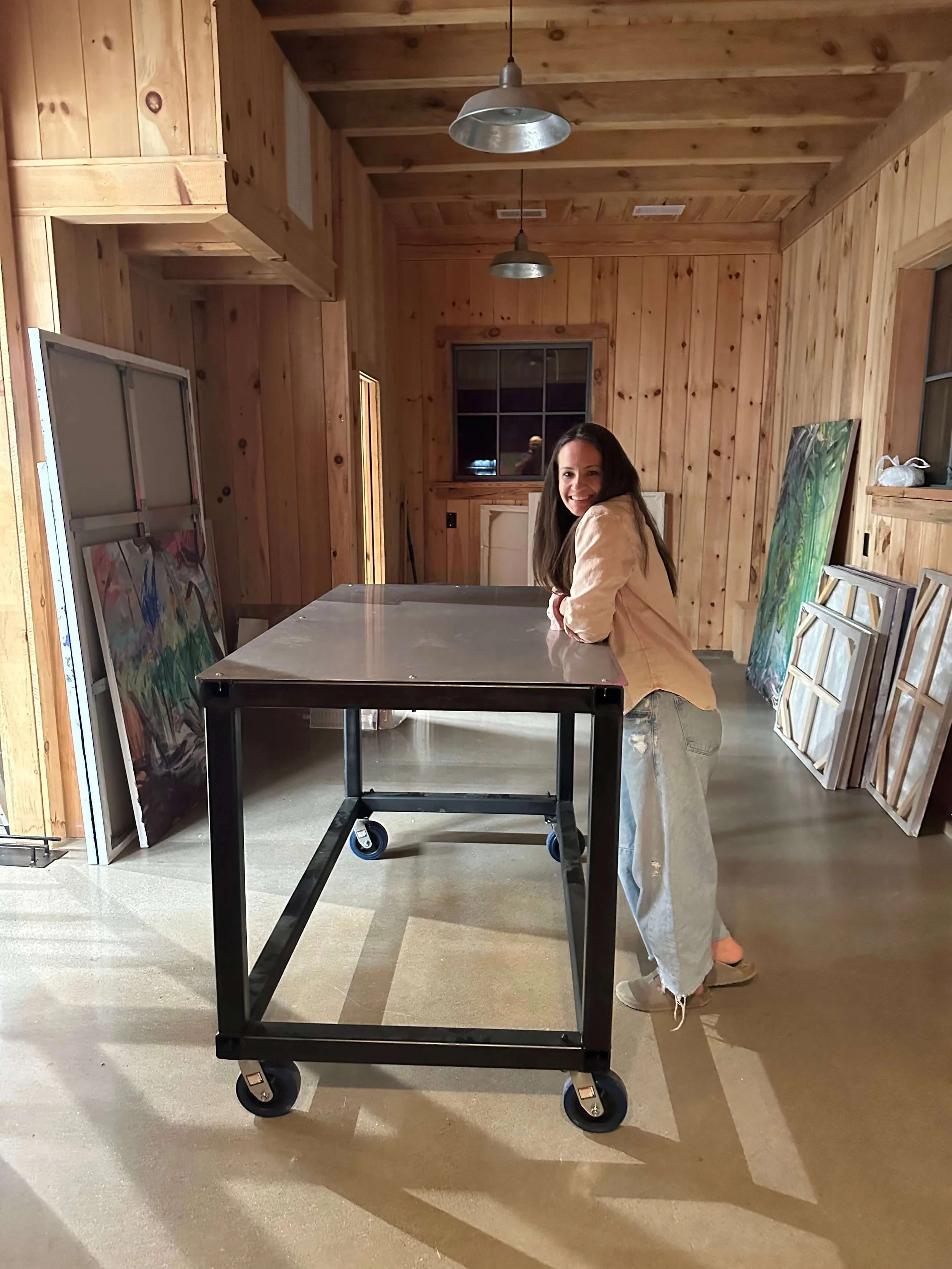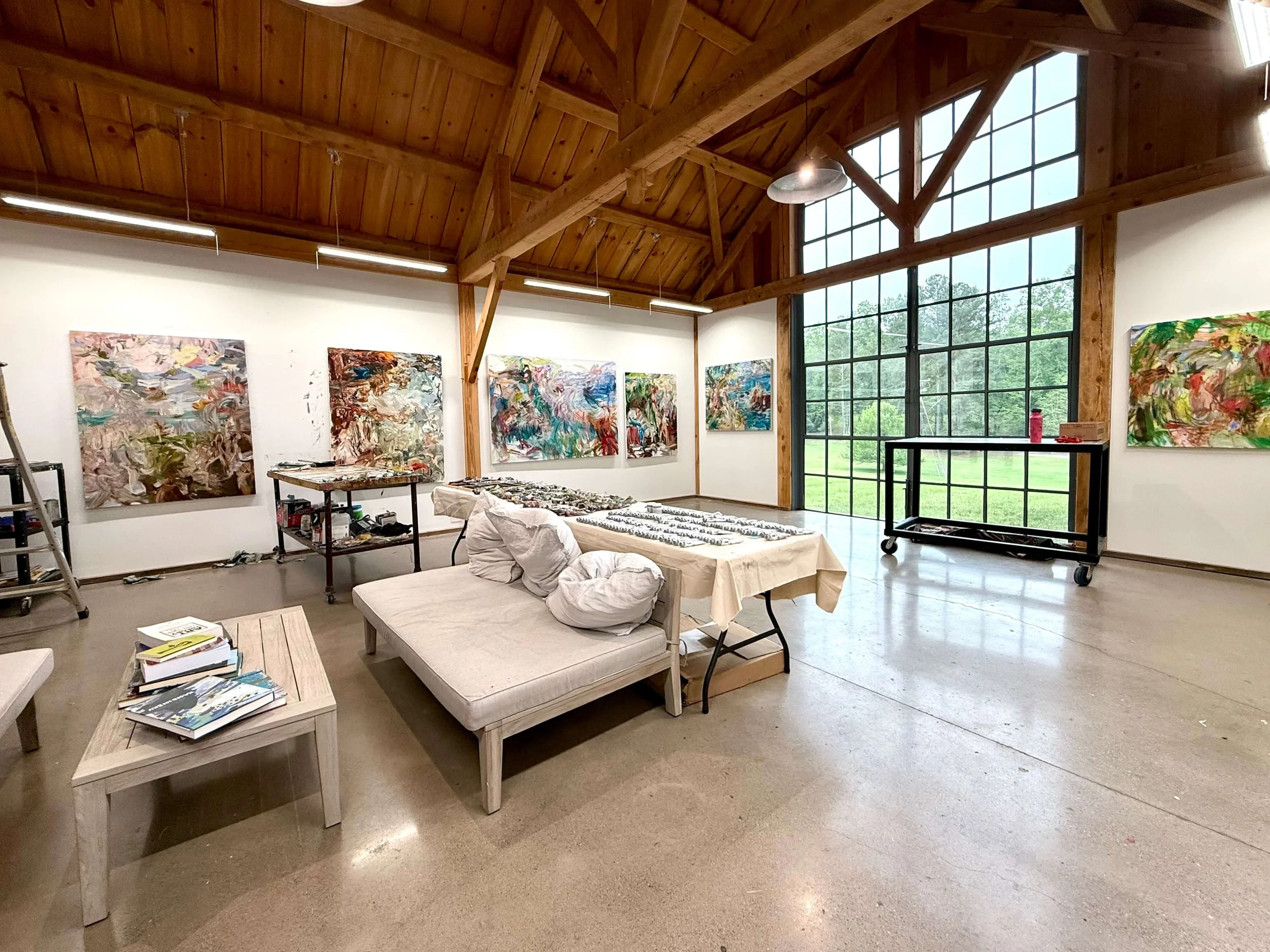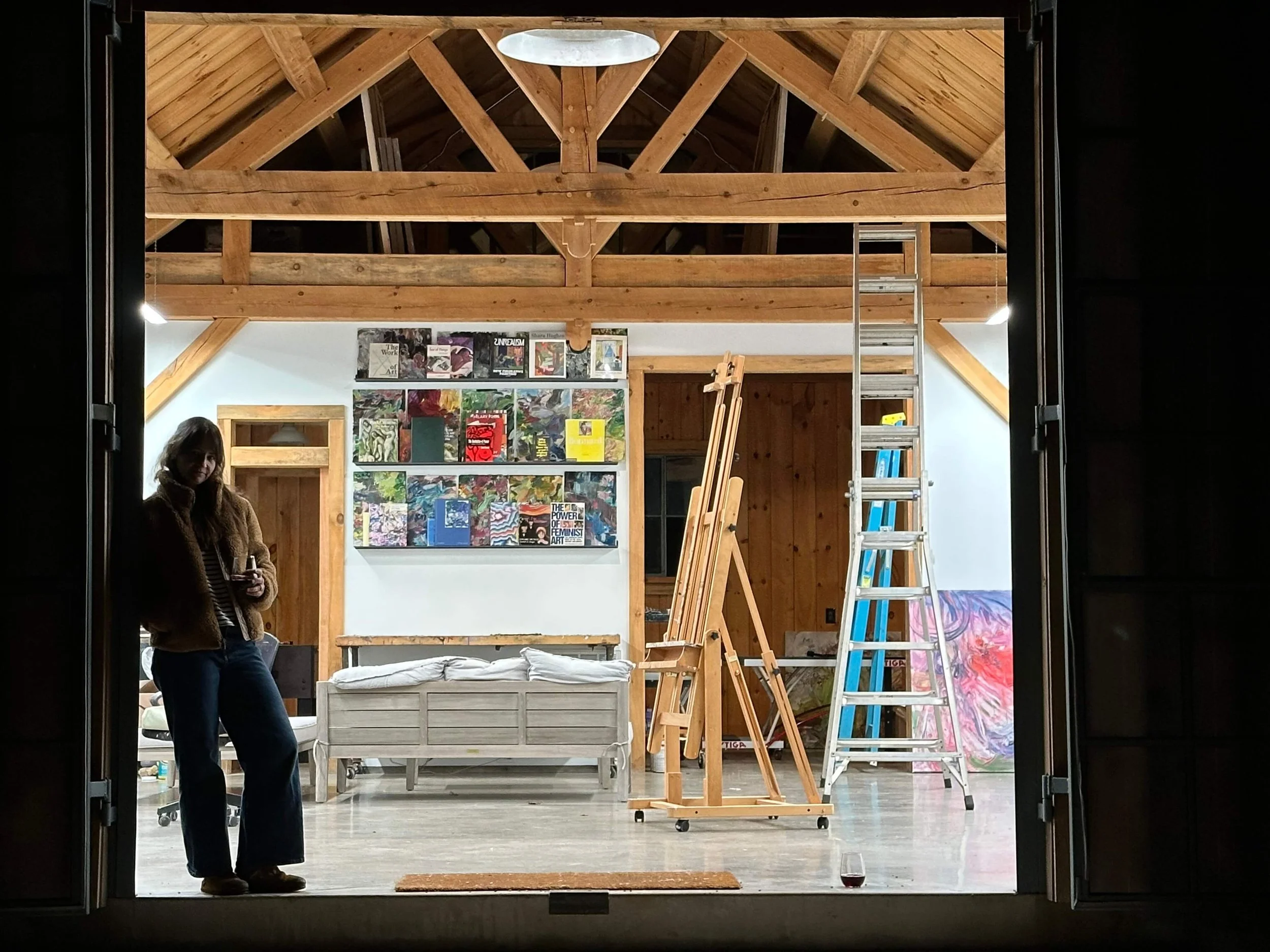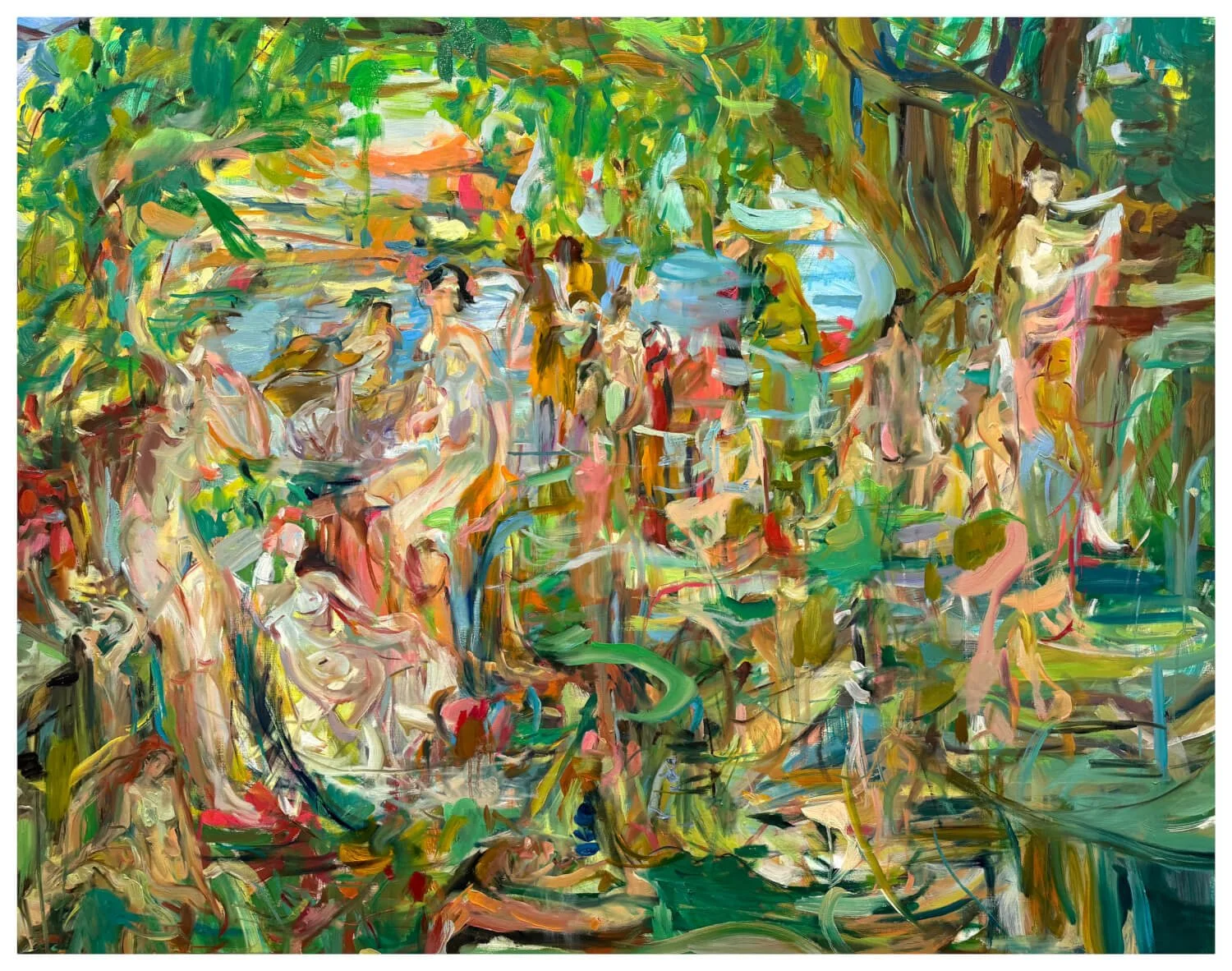Lauren Moses: Layering Histories Through Painting and Music
Lauren Moses received a BA in History from The University of Virginia and a BFA in Painting & Printmaking with a minor in Art History from Virginia Commonwealth University.
Moses’ work has been displayed at Virginia Museum of Contemporary Art; Nicolet College in Rhinelander, WI; Healdsburg Center for the Arts in Healdsburg, CA; Second Street Gallery in Charlottesville, VA; McGuffey Art Center in Charlottesville, VA; The FAB Gallery in Richmond, VA; Anderson Ranch in Snowmass, CO; and Mountain Lake Biological Research Station, University of Virginia in Pembroke, VA.
Her work is included in public institutions such as The University of Virginia Hospital, as well as private and corporate collections across the country and abroad.
Moses currently resides in Charlottesville, Virginia, with her husband and three children
Artist Statement
In my paintings, I engage in a process of constant layering—“packing in” imagery as a means to unpack the complexities of power hierarchies embedded within visual media. I draw on art history to interrogate questions that still plague us. Overbearing or problematized religious, political, and allegorical tropes of the past exist in stark contrast to an ever-barraging free-for-all of unregulated content today. Who can we trust to tell our stories?
This paradox lends itself to a reactionary, unsettled, and chaotic result in my work; the paintings cannot be fully known or entirely seen. Therein lies their beauty. For me, painting is fundamentally tied to drawing—drawing as both a means of seeing and a method for raising questions. It involves a process of breaking down form and reconstituting it anew, an act of continual beginnings rather than a pursuit of resolution. Nothing is certain.
I am captivated by the relationship between painting and time, where action and gesture are not merely ephemeral but caught in a frame, creating an immediate recorded history. Each layer of paint serves as a testament to fresh starts, mistakes, and reconfigurations—an ongoing dance of trying, failing, and trying again.
Within my practice, I strive for freedom, searching for an inner language that resonates deeply. I turn to art histories, as well as relational contemporary influences in film, music, and photography. This amalgamation feels like a process of sifting—acting as a catalyst for exploring the potential of structure and meaning.
There is an undeniable parallel between my painting and my lifelong journey as a musician. As an old-time fiddler and singer, I embrace the passing down of histories, melodies, and narratives. Each interpretation, led by improvisation and intuition, is a unique reflection of both the past and the present. In this way, my work is not just a static object but an evolving narrative—composing and decomposing before the viewer.
My paintings oscillate between the familiar and the unknown, inviting viewers to engage with compositions that appear to fall apart upon closer inspection. They urge a closer look, revealing layers of meaning that shift and transform over time. It is here, in this delicate balance between the known and unknowable, that I find my artistic voice—a space filled with possibility and endless exploration.
Follow the artist on Instagram: @laurenmoses3
Interview
Your paintings often explore the layering of imagery and histories. What first drew you to this way of working, and what do you hope these layers reveal?
I’ve always been drawn to images that feel both familiar and unstable—classical myths, biblical allegories, art historical tropes that we inherit almost unconsciously. Layering became a way to both honor and disrupt them. Through painting, drawing, erasing, and reforming, I can bring those inherited languages forward while also exposing their fractures. What emerges isn’t a seamless picture but a palimpsest—a record of transformation that reveals how meaning itself is layered, contradictory, and alive.
Religious, political, and allegorical tropes play a strong role in your work. How do you approach reinterpreting these powerful symbols for a contemporary audience?
I try not to treat symbols as fixed or untouchable. Instead, I see them as sites of negotiation. A goddess or allegory may have once been an emblem of virtue or power, but she also carries histories of objectification, desire, or control. By reframing these figures on my own terms, I want to show how they still reverberate in our lives today—not as distant artifacts, but as mirrors of the complexities we continue to wrestle with around gender, morality, and representation.
You often describe painting as tied to drawing, as both seeing and questioning. Can you share more about how that relationship plays out in your process?
For me, there’s no real separation between drawing and painting—they’re part of the same act. Both are ways of seeing and questioning, of testing what an image can become. I might begin with a line, erase it, paint over it, redraw into the wet surface—the work accumulates as a record of all those gestures. What remains visible is not a perfected image but the history of its making, with doubt and discovery preserved in the layers.
Music is an important part of your life as a fiddler and singer. How does your background as a musician influence the rhythm, improvisation, or voice within your paintings?
I grew up playing Old Time music, a precursor to bluegrass that functions in a call-and-response format—transposed completely by ear and passed down from one generation to the next. That same structure is present in my painting: a gesture is laid down, and the next one answers it—sometimes in harmony, sometimes in tension. Painting, like music, is a form of performance. It unfolds in rhythm, improvisation, and repetition, but it is also about being seen—and that sense of performance runs through my work, especially in how the female body has historically been staged for viewing, always watched.
In my paintings I am in dialogue not just with myself, but with art history itself—responding to its tropes, reframing its voices, and inserting my own. Just as in music I answer a phrase that has been played for generations, in painting I respond to images that have echoed through centuries.
Time is central in your work, with each layer acting as a recorded history of gestures and decisions. What role does uncertainty play in how a painting resolves itself?
Uncertainty is essential. Each layer of a painting holds not just what I’ve chosen to keep, but also what I’ve let go. The image is never predetermined—it evolves through missteps, erasures, reformations. That process is both vulnerable and liberating: the painting remains open and alive through a willingness to be surprised. Uncertainty leads to failures, but in failure lies growth. Continued failure is painting. What is resolution anyway?
What conversations do you hope your paintings start when viewers encounter them?
I hope my paintings open a space where beauty and unease coexist—where viewers feel both drawn in and unsettled. Ideally, the work sparks questions about how we’ve inherited these visual languages, and what it means to look at them now. I’m less interested in offering answers than in prompting reflection—on desire, power, morality, and the stories we continue to tell about the body and the self.
Are there upcoming projects, exhibitions, or collaborations you are especially excited about?
Yes—I’m developing a new body of work that grows out of research into how classical and mythological sources continue to reverberate in contemporary imagination. I’m interested in how these inherited narratives—often beautiful, often violent—still shape how we see the body, gender, and power. This project gives me a chance to bring archival study into direct conversation with painting, letting historical texts and images act less as fixed references than as living interlocutors. It feels like a pivotal moment in my practice, where sustained research and studio experimentation are converging in new ways. I’m also in conversation with curators and galleries about upcoming shows, which I’ll be sharing more about soon.












